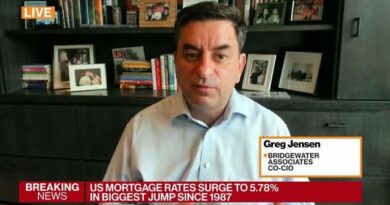
China’s secondary private equity market gains favour amid low valuations, exits

Global investors are increasingly interested in gaining exposure to China through secondary private equity investments amid US-China tensions and a market slump that has squashed valuations, according to industry participants.
Buying and selling of pre-existing investor commitments to private equity and other alternative investment funds provides “diversified and more seasoned” exposure for global investors who want to access Asia, including China, according to Frederic Azemard, managing partner of secondary private equity investor TR Capital.
“We have a lot of global investors who see secondary [investments] as an excellent way to get risk-adjusted exposure to Asia,” said Azemard. By committing funds to secondary private equity investments, investors can achieve higher and faster liquidity turnover, because these investments typically mature quickly, he added.
Last year, secondary private equity transaction volume in China dropped 28 per cent year on year to 74 billion yuan (US$10.2 billion), partly because of a high base. Over a longer term, the market has experienced rapid growth, increasing by 53 per cent, 153 per cent and 39 per cent in 2022, 2021 and 2020, respectively, according to Chinese data provider Zerone.
“We have many investors, including well-known sovereign wealth funds, insurance companies and pension funds, who see us as an alternative way to participate in the growth market in Asia, because making primary investments in China, for example, might be difficult at the moment,” said Min Lin, a founding partner of TPG NewQuest, the secondary-market arm of the US private-equity giant TPG.
Cash-rich companies that previously raised handsome amounts at high valuations do not need funding, said Lin, who also co-heads the Greater China business. “In a market downturn, it is harder for valuations to come down in the primary market, whereas in the secondary market, we have seen reasonable, acceptable discounts,” she said.
British asset manager Schroders Capital also sees opportunities in the secondary market in China, with investors showing interest.
“We have increased the [yuan] secondary side,” Rainer Ender, global head of private equity at Schroders Capital, said in Hong Kong last month. “The investors that are still interested … are Asian and Middle Eastern investors.” This contrasts with typical US and European investors, who are shying away.
To be sure, investors are still cautious about China, and international money is not piling back into the country yet.
“While the entry point may appear attractive right now, it is actually very difficult to move forward on any deal because public markets are closed,” TR Capital’s Azemard said. “We believe it is better to stay close to the market, monitor the situation carefully, and take time over the process, only doing deals in China when exits restart.”A view of buildings in the Lujiazui financial district in Shanghai on June 5, 2024. Photo: AFP
Players in the secondary private-equity market are interested in sectors in China such as healthcare, services, logistics, consumer products and technology.
Another opportunity comes from troubled Chinese property developers looking to unload private equity and venture capital assets, according to Lin, who said her firm has done some deals in this area but did not disclose details. “In fact, many cash-strapped Chinese property developers are not only divesting their non-core assets but also need to sell their core real estate assets,” she said.
Across Asia, the secondary private equity market has grown, as exits in the primary market have been difficult because of uneasy macroeconomic conditions and underperforming and unpredictable initial public offering (IPO) markets.
“Exiting private equity assets in Asia has always been a challenge because they often rely on IPOs,” said Lin. Secondary funds provide “continuation vehicles” as a “longer runway” for assets that cannot list or make trade sales.
Exits plunged 26 per cent to US$101 billion in Asia-Pacific in 2023, compared with the previous five-year average, according to Bain & Company. Among the exit values, 27 per cent were via the secondary market, up 10 per cent from the previous five-year average.
“The demand for the secondary private equity market will persist,” Lin said, adding that the market’s general managers will continue to provide liquidity solutions to good assets. “This development is indispensable for fostering a healthy private equity and venture capital industry.”



